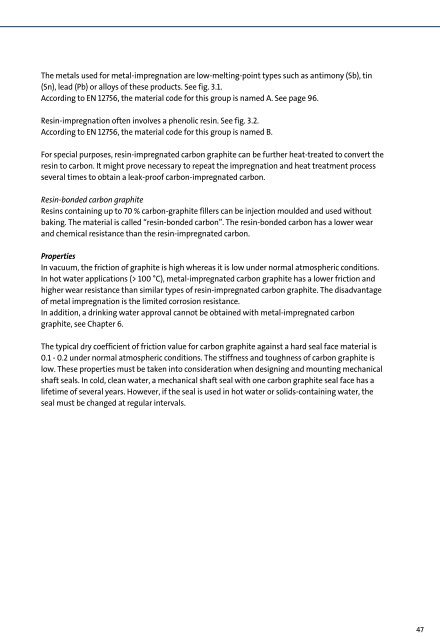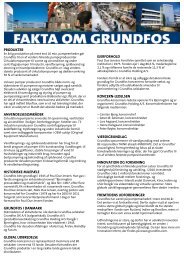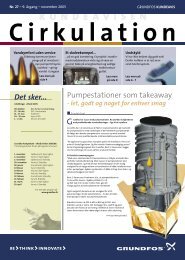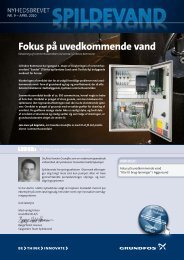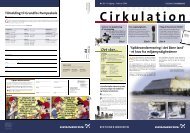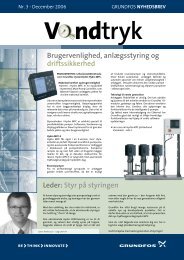Mechanical shaft seals for pumps - Grundfos
Mechanical shaft seals for pumps - Grundfos
Mechanical shaft seals for pumps - Grundfos
Create successful ePaper yourself
Turn your PDF publications into a flip-book with our unique Google optimized e-Paper software.
The metals used <strong>for</strong> metal-impregnation are low-melting-point types such as antimony (Sb), tin<br />
(Sn), lead (Pb) or alloys of these products. See fig. 3.1.<br />
According to EN 12756, the material code <strong>for</strong> this group is named A. See page 96.<br />
Resin-impregnation often involves a phenolic resin. See fig. 3.2.<br />
According to EN 12756, the material code <strong>for</strong> this group is named B.<br />
For special purposes, resin-impregnated carbon graphite can be further heat-treated to convert the<br />
resin to carbon. It might prove necessary to repeat the impregnation and heat treatment process<br />
several times to obtain a leak-proof carbon-impregnated carbon.<br />
Resin-bonded carbon graphite<br />
Resins containing up to 70 % carbon-graphite fillers can be injection moulded and used without<br />
baking. The material is called “resin-bonded carbon”. The resin-bonded carbon has a lower wear<br />
and chemical resistance than the resin-impregnated carbon.<br />
Properties<br />
In vacuum, the friction of graphite is high whereas it is low under normal atmospheric conditions.<br />
In hot water applications (> 100 °C), metal-impregnated carbon graphite has a lower friction and<br />
higher wear resistance than similar types of resin-impregnated carbon graphite. The disadvantage<br />
of metal impregnation is the limited corrosion resistance.<br />
In addition, a drinking water approval cannot be obtained with metal-impregnated carbon<br />
graphite, see Chapter 6.<br />
xx mm<br />
xx mm<br />
The typical dry coefficient of friction value <strong>for</strong> carbon graphite against a hard seal face material is<br />
0.1 - 0.2 under normal atmospheric conditions. The stiffness and toughness of carbon graphite is<br />
low. These properties must be taken into consideration when designing and mounting mechanical<br />
<strong>shaft</strong> <strong>seals</strong>. In cold, clean water, a mechanical <strong>shaft</strong> seal with one carbon graphite seal face has a<br />
lifetime of several years. However, if the seal is used in hot water or solids-containing water, the<br />
seal must be changed at regular intervals.<br />
47


